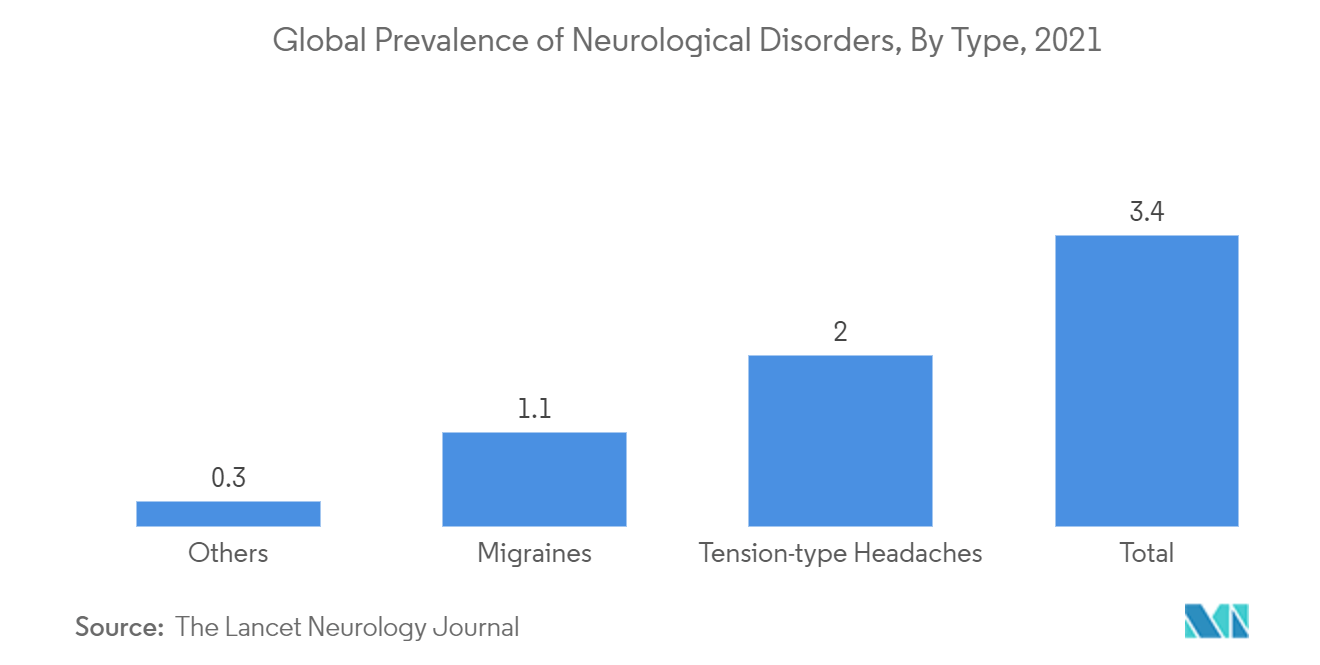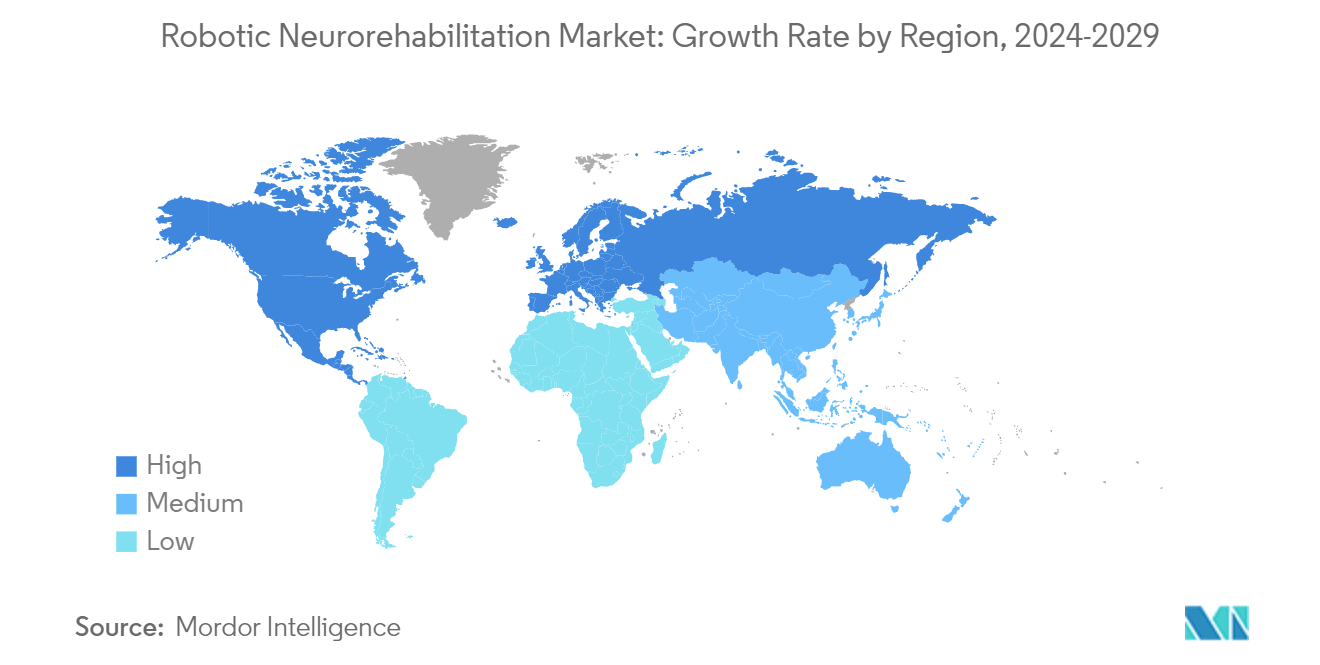Market Trends of Robotic Neurorehabilitation Industry
Devices Segment is Expected to Witness Growth Over the Forecast Period
Robotic neurorehabilitation is appealing due to its ease of deployment potential, adaptability to various motor impairments, and excellent measurement reliability. One of the significant objectives of rehabilitation for people with neurological diseases is to increase mobility. These robotic neurorehabilitation devices are available for the upper and lower extremities. The segment's growth is attributed to the increasing prevalence of stroke and market players' growing focus on introducing technologically advanced products to accelerate recovery time in the upper and lower extremities. For instance, according to the Global Stroke Fact Sheet 2022, about 101 million people worldwide were living with stroke in 2022, and this number has almost doubled over the last 20 years. This is anticipated to drive the demand for neurorehabilitation facilities over the forecast period.
Moreover, robotic therapy has emerged as a powerful tool in the realm of stroke rehabilitation, especially concerning motor control recovery in the upper limbs. For instance, as per a study conducted in Italy and published by Tyromotion in May 2024, 81 patients with subacute stroke underwent 30 sessions of upper limb robotic rehabilitation, of which 49 patients received treatment using the customized robotic protocol, while 32 patients received standard robotic therapy without customized protocol. The results from the study revealed significant improvements in both groups in terms of upper limb motor function, strength, and activities of daily living. However, the patient group that received treatment with the customized robotic protocol yielded more significant recovery in upper limb motor function and strength than the control group. Such studies highlight the clinical benefits offered when robots are incorporated with neurorehabilitation therapy, which is anticipated to increase its penetration rate among the patient population, thereby driving the demand for these devices over the forecast period.
Additionally, the increasing funding and research grants by government authorities to support the development programs for neurorehabilitation are expected to surge the adoption rate of robotic-assisted therapy across the globe. For instance, the National Natural Science Foundation of China has funded 476 research projects with a total funding of USD 2.67 million (RMB 192.38 million) to support neurorehabilitation research in China from 2010 to 2022. Such investments are anticipated to boost the research and development capabilities for robotic neurorehabilitation devices across the globe, thereby contributing to the market growth over the forecast period.
Hence, the devices segment is expected to grow in the upcoming years due to the increasing research and development activities in robotic neurorehabilitation and the increasing prevalence of neurological conditions over the forecast period.

North America is Expected to Dominate the Robotic Neurorehabilitation Market
North America is expected to dominate the market due to the increasing geriatric population with neurological disorders and the rising number of rehabilitation facilities with rapid acceptance and penetration of robotic neurorehabilitation solutions across the region. In addition, a strong presence of established players offering a wide range of solutions and access to developed healthcare infrastructure is anticipated to drive market growth across the region. For instance, according to a 2024 Alzheimer's Association report, around 6.9 million Americans aged 65 and over were living with Alzheimer's dementia in 2024 of the total United States population. Furthermore, the number of Americans aged 65 and older is projected to grow from 8 million in 2022 to 82 million by 2050. The increasing geriatric population with neurological disorders is expected to surge the demand for rehabilitation facilities, contributing to market growth.
Moreover, the increasing focus of government authorities on research grants and funding for brain injuries is expected to surge the demand for neurorehabilitation facilities. For instance, as per an article published by Carleton University in August 2023, Brain Canada, in collaboration with Brain Changes Initiative (BCI), introduced the Innovation Grants for Research Impact in Traumatic Brain Injury funding opportunity to improve the trajectory of recovery for individuals after brain injury with USD 1.4 million. Such initiatives are anticipated to increase accessibility to rehabilitation care, which is expected to surge the penetration rate of these facilities over the forecast period.
Additionally, the market players operating are focused on introducing technologically advanced solutions through strategic alliances to strengthen their research and development capabilities. For instance, in December 2023, Motusium, the innovative healthcare startup based in the United States, known for its advanced rehabilitation solutions, signed a partnership agreement with Fourier Intelligence, a company providing exoskeleton and rehabilitation robotics. This collaboration aims to transform the field of neurorehabilitation, combining Motusium's expertise in robotics and AI with Fourier's technological expertise. Such strategic partnerships are expected to lead to technological innovation in the field of robotic neurorehabilitation over the forecast period.
Therefore, owing to the factors mentioned above, such as the increasing prevalence of neurological disorders among the geriatric population and technological advancements introduced by market players across the region, the growth of the studied market is anticipated in the North American region.


